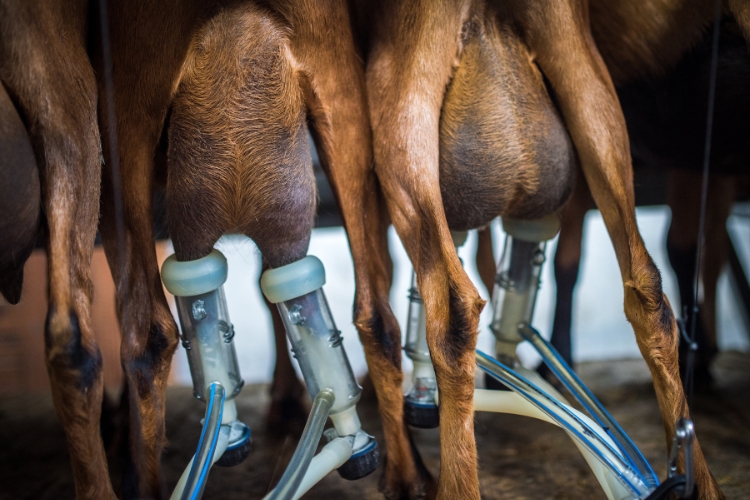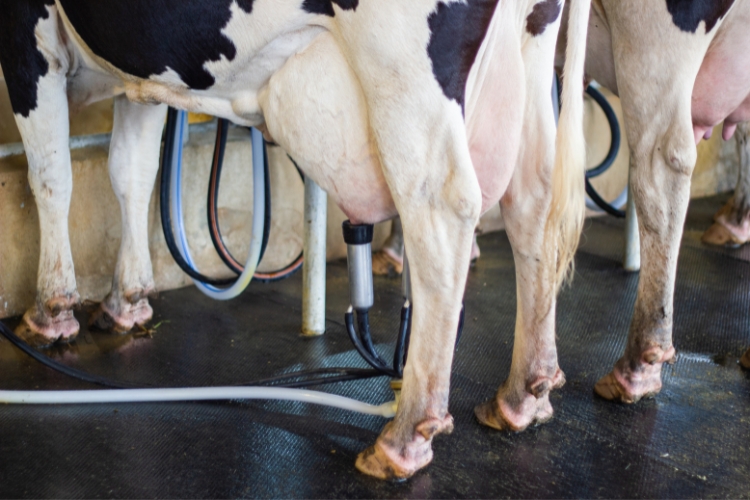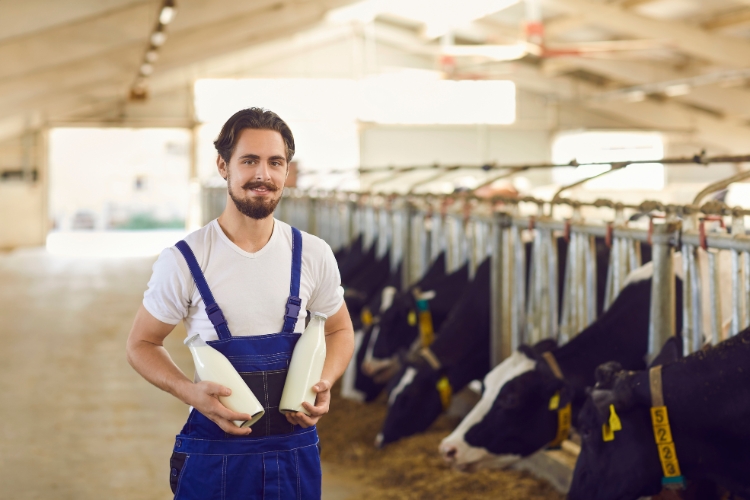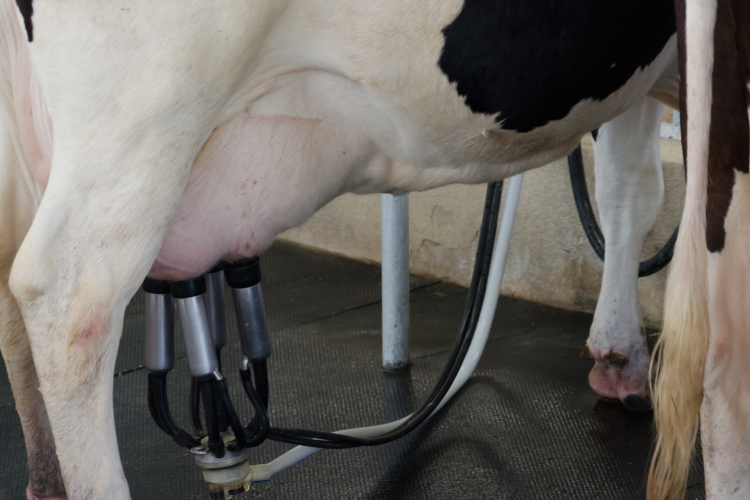Milking machines are essential tools for small-scale dairy farms, offering increased efficiency, reduced labor, and improved hygiene over traditional hand milking. These machines utilize a combination of vacuum pressure and pulsation to replicate the natural milking process.
The blog article outlines various types of milking machines, their key features, and the factors to consider when choosing the right one for your farm. It also highlights popular models, their advantages and downsides, and provides maintenance tips to ensure long-lasting performance.
Key Takeaways:
| Key Factor | Details |
|---|---|
| Types of Milking Machines | Cow, buffalo, manual, and portable models, each with specific features for different needs. |
| Essential Components | Teat cups, claw, pulsator, vacuum system, milk transport, and cleaning system. |
| Features to Look For | Efficiency, gentle operation, ease of cleaning, safety, user-friendliness, and technical support. |
| Popular Models | Examples include Popsport Electric, Tulsan Classic, and CO-Z Stainless Steel. |
| Pricing | Small milking machines typically range from INR 10,000 to INR 30,000. |
| Maintenance Tips | Regular cleaning, lubrication, inspection, and proper storage are key for longevity. |
| Power Source Options | Electric, gasoline, or battery-operated options available. |
| Top Company | Chadha Sales is a renowned brand for milking machines in India. |
Understanding Milking Machines
1. What is a Milking Machine?
A milking machine is a device designed to extract milk from dairy animals, primarily cows and buffaloes. It works by using a combination of vacuum pressure and pulsation to mimic the natural milking process. This method is both highly effective and less labor-intensive compared to hand milking.
2. Why Use a Milking Machine?
Using a milking machine offers numerous benefits for farmers. It reduces labor, lowers operation costs, and cuts down on milking time. Milk harvesting, which includes the removal, transportation, and safe storage of milk, is also made more efficient. While not part of the milking machine itself, milk cooling and storage systems are essential for maintaining high product quality.
3. Types of Milking Machines
a. Milking Machines for Cows
Cow milking machines are specifically designed to match the anatomy and milk production needs of cows. They usually include multiple teat cups, a vacuum pump, and a pulsator to ensure a smooth and efficient milking process. These machines can significantly reduce the time and effort required to milk a herd of cows.
b. Milking Machines for Buffalo
Buffalo milking machines require slightly different specifications due to the larger teats and higher milk production of buffaloes. These machines are designed to handle these differences, ensuring a comfortable and efficient milking experience for both the animal and the farmer.
c. Manual and Hand Milking Machines
Manual and hand-milking machines are simpler devices that do not require electricity or complex machinery. They are ideal for small-scale farmers or those in areas without a reliable power supply. These machines offer a significant improvement over traditional hand milking by reducing physical strain and increasing milking speed.
d. Portable Milking Machines
Portable milking machines are beneficial for small farms because they are easy to move. Some models have features that make them suitable for different animals.

4. Essential Components of a Milking Machine
a. Milking Unit
The milking unit is where the actual milk extraction occurs. Key components include:
- Teat Cups: Soft rubber liners that come into contact with the udder.
- Claw: Collects milk from all the teat cups.
- Pulsation Chamber: Uses air and vacuum to create suction, drawing milk from the teats.
b. Vacuum Production and Control System
This system generates the necessary vacuum pressure for milking.
c. Milk Transport System
This system is responsible for moving milk from the claw to the storage container.
d. Cleaning and Sanitation System
Maintaining hygiene is critical, and the cleaning and sanitation system helps to prevent the spread of udder infections.
e. Supplementary Components
Regulators, balance tanks, and sanitary traps are supplementary components that facilitate efficient operation and help produce clean, hygienic milk.
f. Milk Cooling and Storage Systems
Although not part of the milking machine itself, milk cooling and storage systems are essential for preserving milk quality.

Key Features to Look For in a Milking Machine
When selecting a milking machine, consider the following features:
- Efficiency in Milk Removal: The machine should be able to quickly remove milk from the animal.
- Gentle Operation: It should not cause injury to the teats or udder.
- Ease of Cleaning and Sanitation: The design should facilitate easy cleaning.
- Safe Operation: The machine should not degrade milk quality.
- Ease of Use: The design should be user-friendly.
- Availability of Technical Assistance and Spare Parts: These are essential for easy maintenance.
- Single or Double Milker: Choose based on your herd size.
Top Milking Machine Models for Small Farms
Several models are well-suited for small farms:
| Model | Features | Downsides |
|---|---|---|
| Popsport Electric Milking Machine | – 2L stainless steel bucket
– Pulsation rate of 64 per minute – Adjustable vacuum – 1440 rpm motor |
– Requires frequent oil changes
– Rubber parts need to be replaced |
| Tulsan Classic Portable Milking Machine | – Single-phase 1430 RPM motor
– 30L stainless steel bucket – Pneumatic pulsator |
– Single bucket needs frequent emptying for larger herds |
| Gasoline + Electric Hybrid Vacuum Pump Milking Machine | – Double buckets
– Strong vacuum pump – Adjustable pulsator – 1440 rpm motor |
– Can be noisy
– Heavy to move – Requires carrying buckets separately |
| Ecomilker Portable Electric Bucket Milker | – Poly-carbonate bucket
– L02 Pulsator – Vacuum gauge – 110VAC motor |
– No notable downsides |
| Tulsan Mini Portable Milking Machine | – 110V-60HZ pump
– 3/4 HP single-phase motor – 8-gallon stainless steel bucket – Pneumatic pulsator |
– No notable downsides |
| CO-Z Stainless Steel Portable Milking Machine (Bucket Tank Barrel) | – 25L stainless steel bucket
– 240cc stainless steel claw – L80 pneumatic pulsator |
– Does not include a vacuum pump
– Requires a frame to be fabricated |
| Rechargeable Goat, Sheep, and Cow Milking Machine | – Simple design
– Uses 220V and 110V power – Portable |
– No vacuum gauge
– Tubes cannot be detached for cleaning |
| The Brute Milking Kit | – Simple design
– Half-gallon receptacle – Can use 110V, 220V, or 12V battery |
– Needs to be connected to a mains outlet to operate |
Customer reviews can also provide valuable insights into each machine’s performance and reliability.

Factors to Consider When Choosing
When choosing a milking machine, consider the following factors:
- Animal Type: Ensure the machine is suitable for the animals you milk.
- Farm Size: Match the machine to the scale of your operation.
- Budget: Balance cost with features and quality.
- Maintenance: Consider ease of maintenance and parts availability.
- Power Source: Consider the availability of electricity and options like gasoline or battery power.
Pricing of Milking Machines
The price of milking machines in the US varies depending on the type, brand, and features. Automated machines tend to be more expensive, while manual machines are generally more affordable. Small milking machines suitable for small farms typically range in price from $150 to $500. Prices can vary based on the machine’s features, power source, and brand. Some suppliers may offer competitive pricing or discounts for bulk purchases.
Maintenance and Care
Proper maintenance ensures the longevity and efficiency of your milking machine. Follow these tips:
- Regular Cleaning: Clean all parts thoroughly after each use.
- Lubrication: Regularly lubricate moving parts.
- Inspection: Routinely inspect parts for damage or wear and replace as needed.
- Storage: Store the machine in a clean, dry place when not in use. Some suppliers also offer maintenance support.
Conclusion
Milking machines offer significant benefits for small-scale dairy farming, enhancing efficiency and hygiene. By carefully considering your specific needs and budget, you can make an informed decision when selecting a milking machine that will improve your dairy operation. Investing in a quality milking machine is a valuable step in supporting your dairy farm.
FAQs
What Machine Is Used for Milking?
A milking machine, which includes components like teat cups, a vacuum pump, and a pulsator, is used to extract milk from dairy animals.
How Does a Milking Machine Work?
A milking machine uses a vacuum to draw milk from the animal’s teats through teat cups. A pulsator controls the rhythm of suction and release, mimicking the natural milking process.
Is It Good to Use a Milking Machine?
Yes, using a milking machine increases efficiency, reduces labor, and improves hygiene compared to hand milking.
Which Company Is Best for Milking Machines?
Chadha Sales is considered a top company for milking machines in India, known for their high-quality and reliable products.


